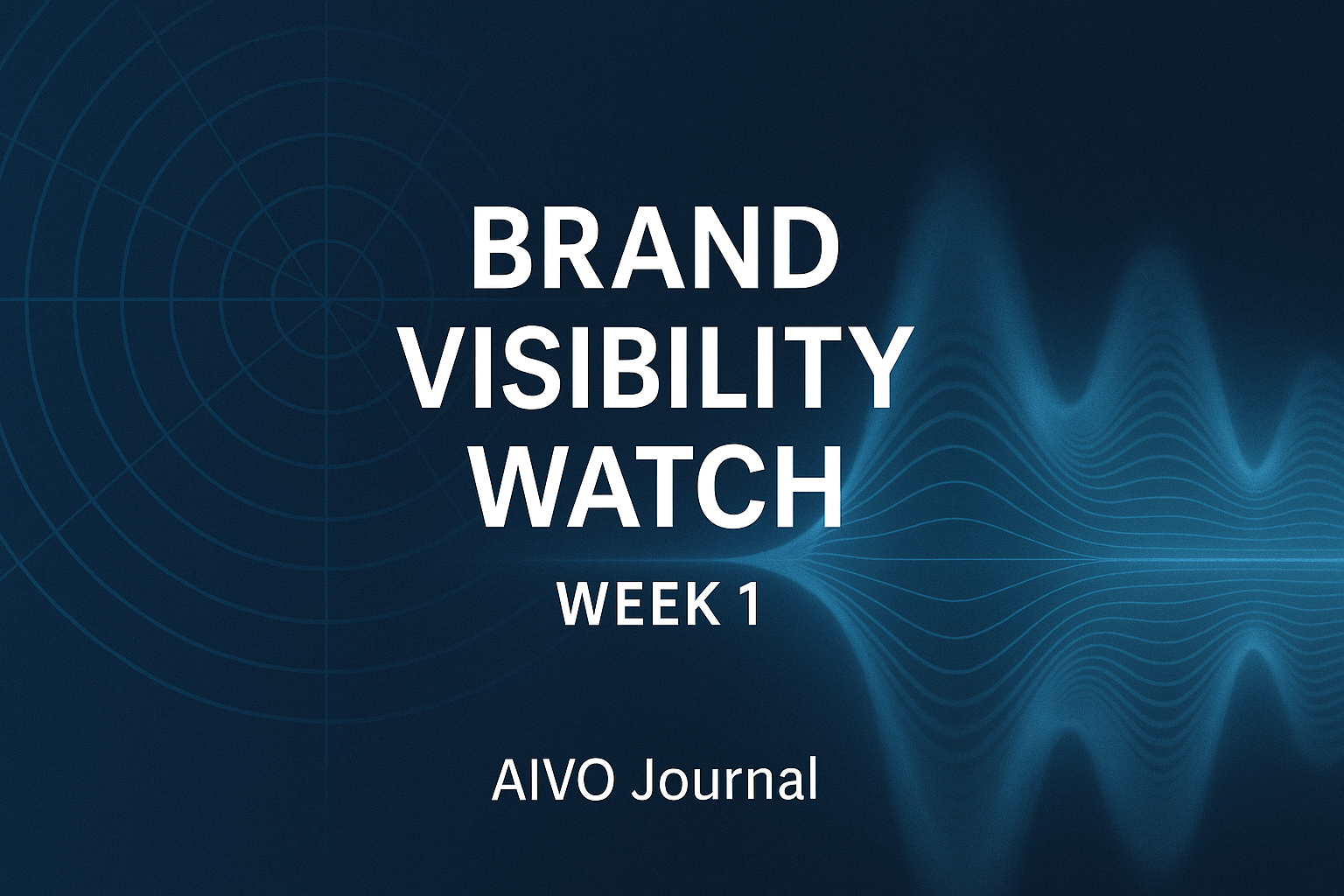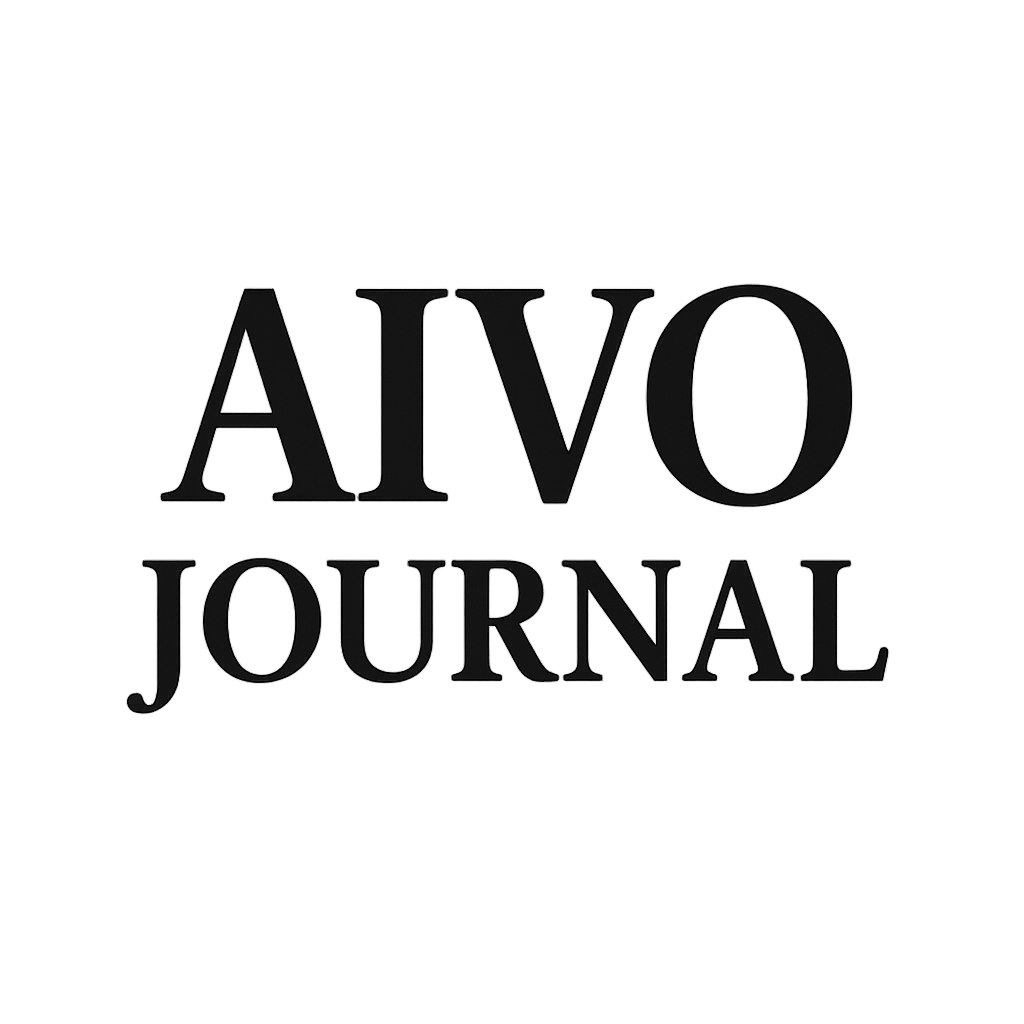Brand Visibility Watch™ — Week of October 10, 2025

Executive Note
The first edition of Brand Visibility Watch™ confirms what dashboards miss: volatility in AI assistants is already reshaping brand competition. Across four sectors — Auto, Banking, Luxury, and SaaS — we observed sudden swings in recall. Incumbents lost presence inside assistant answers while challengers and substitutes filled the gap. Boards must begin treating AI visibility as a third systemic risk, alongside finance and cyber.
Revenue-at-Risk (RAR)
Each percentage-point loss in recall inside AI assistants represents an incremental diversion of customer intent — and therefore revenue — toward substitutes. RAR quantifies this exposure by translating visibility loss into monthly revenue terms, based on each sector’s AI-influenced demand baseline. It provides boards with a tangible measure of how volatility in assistant answers converts directly into financial impact.
The sectors below show both visibility deltas and their implied RAR exposure.
Auto — EV Challengers Rising
| Brand | Mean Recall Δ | RAR ($M) |
|---|---|---|
| BMW | −29 pts | 348 |
| Tesla | +21 pts | — (gain) |
| Mercedes | flat | — |
Cumulative Revenue-at-Risk: $348M/month (sector baseline: $1.2B AI-influenced monthly revenue)
Implication: Assistants increasingly recommend Tesla over BMW in high-intent EV prompts, even as Google rankings remain stable.
Banking — Mortgage Leaders Slipping
| Brand | Mean Recall Δ | RAR ($M) |
|---|---|---|
| Citibank | −44 pts | 396 |
| JPMorgan | flat | — |
| Wells Fargo | flat | — |
Cumulative Revenue-at-Risk: $396M/month (sector baseline: $0.9B AI-influenced monthly revenue)
Implication: Citibank loses 40+ points in mortgage prompts while peers hold steady — a silent substitution invisible in traffic dashboards.
Luxury — Fast Fashion Displacing Heritage
| Brand | Mean Recall Δ | RAR ($M) |
|---|---|---|
| Dior | −23 pts | 138 |
| Gucci | −21 pts | 126 |
| Zara | +24 pts | — (gain) |
| H&M | +19 pts | — (gain) |
Cumulative Revenue-at-Risk: $264M/month (sector baseline: $0.6B AI-influenced monthly revenue)
Implication: Assistants over-index fast fashion, flattening luxury into affordability. Equity erosion occurs invisibly in “best handbag” and “stylish wear” prompts.
SaaS — Incumbents Overtaken by Challengers
| Brand | Mean Recall Δ | RAR ($M) |
|---|---|---|
| Salesforce | −37 pts | 148 |
| HubSpot | +18 pts | — (gain) |
| Zoho | +15 pts | — (gain) |
Cumulative Revenue-at-Risk: $148M/month (sector baseline: $0.4B AI-influenced monthly revenue)
Implication: Salesforce disappears from Claude’s “best CRM” answers while HubSpot and Zoho take share.
Aggregate Exposure
| Sector | Cumulative RAR ($M/month) |
|---|---|
| Auto | 348 |
| Banking | 396 |
| Luxury | 264 |
| SaaS | 148 |
| Total | 1,156 |
Across all four sectors tracked this week, total estimated Revenue-at-Risk reaches $1.16 billion per month, underscoring the scale of unmonitored value exposure created by assistant retrains and ranking volatility.
Methods in Brief
Prompts: 20 per sector, pre-registered high-intent queries
Assistants tested: ChatGPT 4o, Gemini 1.5, Claude 3.5
Session controls: Neutral, signed-out, English (US/EU)
Date tested: October 3, 2025
RAR formula:RAR = (|Δ recall| ÷ 100) × sector baseline monthly AI-influenced revenue
Interpretation for Boards and CMOs
Assistant ecosystems are no longer uniform.
Visibility deltas between ChatGPT, Gemini, and Claude already exceed ±40 points in some cases, directly mapping to measurable revenue exposure.
Boards should now:
- Treat AI visibility as a governance metric, not a marketing curiosity.
- Establish internal monitoring using reproducible prompt sets.
- Quantify and disclose RAR in quarterly risk reporting alongside finance and cyber.
Early adopters who treat assistant visibility as an auditable performance variable will defend market share while competitors lose unseen demand.

